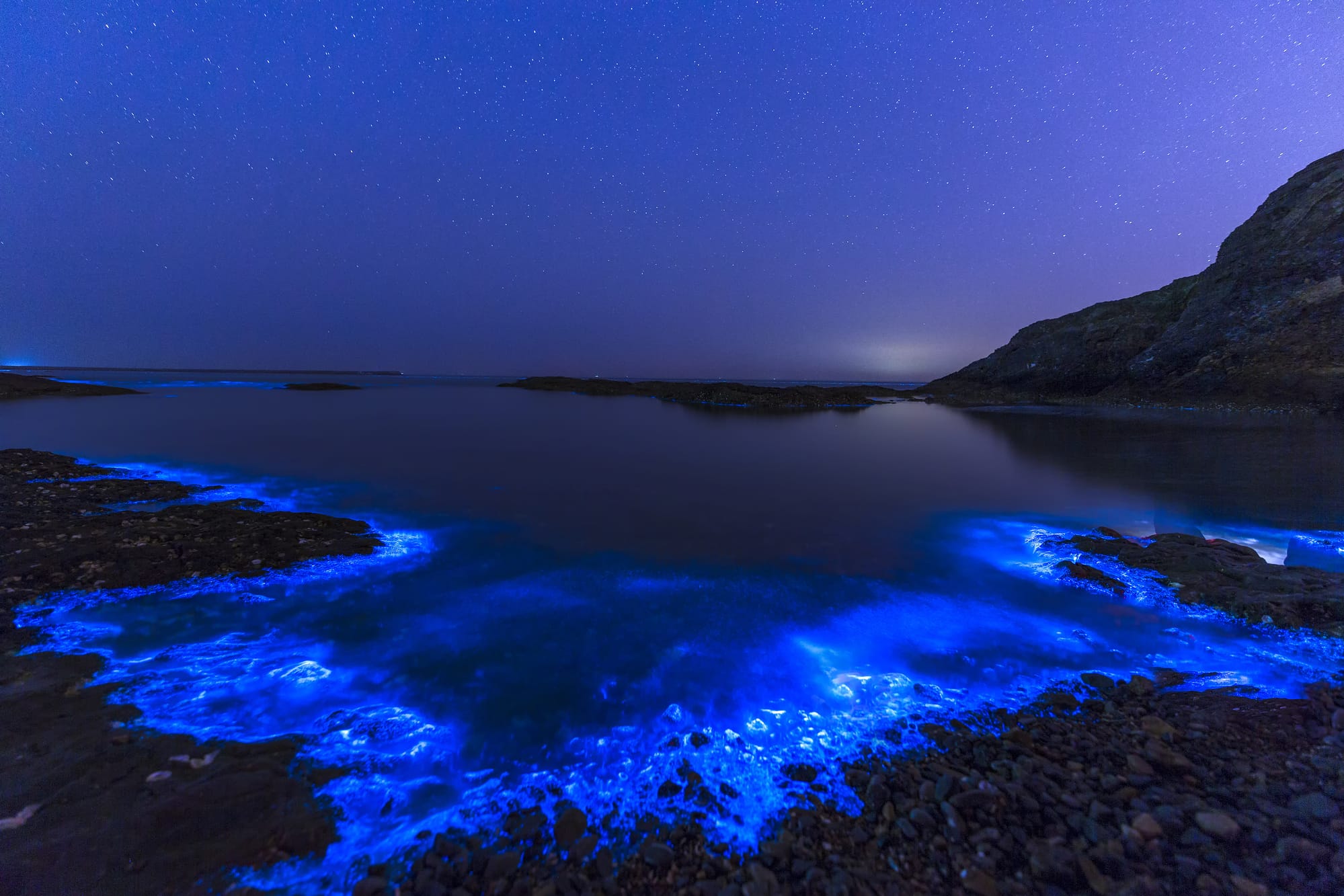Picture yourself walking along the shoreline under a starlit sky, only to find the ocean waters glowing with ethereal blue light. As night falls, the water comes alive with millions of tiny organisms, commonly called bioluminescent plankton. They can produce light when agitated through a chemical reaction within their bodies. Such a phenomenon can be ►
Picture yourself walking along the shoreline under a starlit sky, only to find the ocean waters glowing with ethereal blue light. As night falls, the water comes alive with millions of tiny organisms, commonly called bioluminescent plankton. They can produce light when agitated through a chemical reaction within their bodies. Such a phenomenon can be observed on Vaaddhoo Island in the Maldives, the island of Vieques in Puerto Rico, or the shores of San Diego in the United States. The phenomenon serves various purposes, including defense mechanisms, attracting prey, or communication within the marine ecosystem. But more importantly, it is a spectacle resembling a sea of stars.
Other animals also have the faculty to glow, like the “firefly squid”, which emits blue light from photophores. It is still unclear whether their bioluminescence is used to communicate, to attract prey, or for camouflage. They can be found on the shores of Japan, notably in Toyama Bay. They usually live in deeper water, about 200 to 400 meters deep, but in spring, during spawning season, they migrate in mass towards the beaches, making the bay shimmer like a scene from a fairy tale. The highly popular Hotaruika Museum, open since 1989, provides guests with a chance to not only learn about the squid but also to enjoy a live light show come spring.
Next on our list are fireflies, also called glowworms or lightning bugs; they are more common but nonetheless enchanting. Though they can be found in many places worldwide, we will take a closer look at especially awe-inspiring spots. First are the Great Smoky Mountains in Tennessee in the United States. Nestled within its misty peaks, fireflies, specifically the synchronous fireflies of the Photinus carolinus species, illuminate the forests with their synchronized flashes. Firefly flash patterns are part of their mating display. Each species has a characteristic pattern that helps male and female individuals recognize and find each other. Our second spot to observe glowworms is the Waitomo Grotto in New Zealand. They are home to thousands of tiny glowworms from the specie Arachnocampa Luminosa unique to New Zealand. You can take a boat ride to experience the radiant blue light turning the cavern into a mesmerizing celestial landscape and learn about the world-famous cave’s history and legends.
Glowing animals are not the only ones to shine. In Hachijō-Jima, a volcanic island in Japan, you might feel like you stepped into Alice in Wonderland. During the rainy season (which lasts from May to September), over seven different species of mushrooms light up the island’s forest floor. Hit the hiking trails or head to the botanical gardens to get a closer look at the fluorescent fungi. A similar phenomenon occurs in Maharashtra in India. During the monsoon season, the rain-soaked forests of the Western Ghats come alive with ethereal glows, courtesy of a unique fungus called Mycena. Nestled among the forest beds, they emit a soft radiance that illuminates the surroundings, creating a surreal and otherworldly experience. ◄
